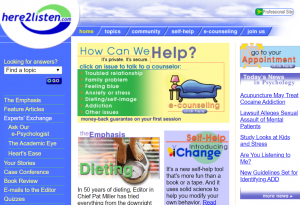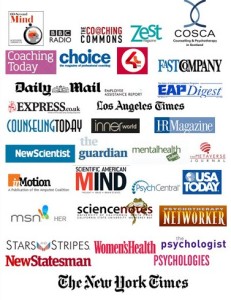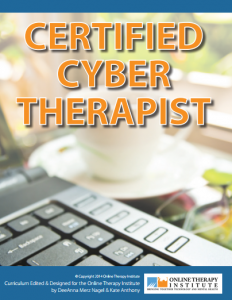
A very long time ago I logged into a platform (Here2Listen) that offered chat therapy to clients. I think the year was 2000. Twenty years ago. At the time I was unable to work outside the home due to a recently acquired illness but I wanted to continue my chosen profession. This was just at the beginning of the dotcom balloon, followed by the dotcom bomb. I was ever so grateful for this new way to connect to clients. The technology was simple and the therapeutic value was evident.
Years later I worked for an Employee Assistance Program conducting “email” therapy. Within 3 years I closed 1000 cases and that translated to approximately 5000 therapeutic “letters” to clients. Again, the technology was simple and the therapeutic value was evident.
The written word as therapy
Because this is how my career as an online therapist began, I have remained a loyal fan of the delivery of therapy via the written word. Words are powerful. Language is powerful. Our book, published in 2010 (co-written with Kate Anthony) Therapy Online: A Practical Guide, is all about email and chat therapy. The theoretical and clinical underpinnings of email and chat therapy are solidly discussed and remain relevant today.
Technology glitches
Now we have audio (not just phone or cell phone) and video. And it is awesome, until it isn’t. With the surge of usage during the pandemic many of us experience bandwidth issues. This can be frustrating- the grainy face, the stuttering, the complete freeze frame. And we have all likely learned a few tricks- for instance, if the video is faltering turn off the video and just use audio.
And here’s the next trick- if the audio is not viable, turn off the audio and video and just chat. Yes. Chat. Chat is therapeutic and the dialogue can be beneficial. Instead of ending the session only to reschedule, just continue in chat. Most telemental health platforms offer a chat component. It is a good idea to prepare your client ahead of time for these possibilities, including how to transition between delivery methods.
Email therapy
To take this further, consider offering email therapy to your clients as an adjunct. Schedule a video/audio session and ask your client to write a letter via email (encrypted, of course) reflecting on the session. Respond to your client within 2-3 days of receipt. Follow with the next audio, video or chat session. Said differently, mix it up. You will be surprised at the rich expression and the added dimension email and chat can bring to the counselling process.
I realize in the United States the concern is reimbursement from third party payers. If you are on provider panels, I recommend calling the insurance or EAP plans and ask if there is any reimbursement for asynchronous or written communication. It is not mainstream, but it is not unheard of.
If you only wish to conduct email therapy, you can offer a one-off exchange or packages- for example, 4 exchanges or 8 exchanges. Some clients prefer the “anonymity” email therapy brings. To be clear, you will know the identity of your client following all necessary intake and assessment protocol, but the process of writing back and forth creates a sense of anonymity that can be very beneficial to the therapeutic process.
Training
In our credentialed course, Certified Cyber Therapist, we include a case study that starts with email and ends with a video session, Email and chat and phone are used throughout. This course also teaches the nuances of writing therapeutic email and discusses the clinical implications.
If you are interested in becoming credentialed, consider becoming a Certified Cyber Therapist. And if you just want to learn more about email and chat therapy, consider this short course: The Online Written Word as Therapeutic Dialogue.
These are the times that cause us to stretch as we find new (not-so-new) ways to be of service.


